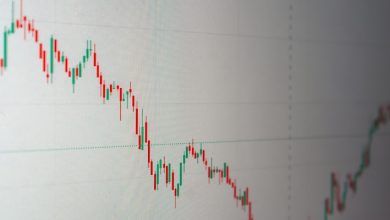The Risks of Leverage and Margin Trading in Crypto

- Understanding Leverage and Margin Trading in the Crypto Market
- The Dangers of Using Leverage in Cryptocurrency Investments
- How Margin Trading Can Amplify gains and Losses in Crypto
- Common Mistakes to Avoid When Trading on Margin in the Crypto Space
- Regulatory Challenges Surrounding Leverage and Margin Trading in Cryptocurrency
- Strategies for Managing Risk in Leverage and Margin Trading in Crypto
Understanding Leverage and Margin Trading in the Crypto Market
Understanding leverage and margin trading in the crypto market is crucial for investors looking to maximize their potential returns. Leverage allows traders to control a larger position with a smaller amount of capital, magnifying both profits and losses. Margin trading, on the other hand, involves borrowing funds to increase your trading position beyond what your own capital would allow.
While leverage and margin trading can offer the opportunity for significant gains, they also come with a high level of risk. The volatile nature of the cryptocurrency market means that prices can fluctuate rapidly, leading to substantial losses if the market moves against your position. It is essential to have a thorough understanding of how leverage and margin trading work before engaging in these strategies.
One of the key risks of leverage and margin trading is the potential for liquidation. If the value of your position drops below a certain threshold, known as the maintenance margin level, your broker may liquidate your position to cover the losses. This can result in the loss of your entire investment and even leave you owing money to the broker.
It is important to carefully consider your risk tolerance and financial situation before engaging in leverage and margin trading in the crypto market. While these strategies can offer the potential for high returns, they also carry a significant amount of risk. It is advisable to start with a small amount of capital and gradually increase your position size as you gain more experience and confidence in your trading abilities.
The Dangers of Using Leverage in Cryptocurrency Investments
Using leverage in cryptocurrency investments can be extremely risky and lead to significant financial losses. Leverage allows investors to control a larger position with a smaller amount of capital, magnifying both potential profits and losses. While leverage can amplify gains in a bullish market, it can also increase the impact of price swings in the opposite direction.
One of the primary dangers of using leverage in cryptocurrency trading is the potential for liquidation. If the market moves against a leveraged position, investors may be required to add additional funds to their account to maintain the position or risk having their position forcibly closed by the exchange. This can result in the loss of the entire initial investment and even leave investors owing money to the exchange.
Another risk of using leverage in crypto trading is the increased susceptibility to market volatility. Cryptocurrency markets are known for their high levels of volatility, with prices often experiencing rapid and unpredictable fluctuations. When trading with leverage, even a small price movement can result in significant losses if the position is not properly managed.
Furthermore, the use of leverage can also lead to emotional decision-making. The fear of missing out on potential profits or the desire to recover losses quickly can cloud judgment and prompt investors to take on excessive risk. This can result in impulsive trading decisions that may further exacerbate losses.
Overall, while leverage can offer the potential for higher returns, it also comes with a heightened level of risk. Investors should carefully consider their risk tolerance and trading experience before engaging in leveraged cryptocurrency trading and always use proper risk management strategies to protect their capital.
How Margin Trading Can Amplify gains and Losses in Crypto
Margin trading in the world of cryptocurrency can be a double-edged sword, amplifying gains and losses for traders. This practice involves borrowing funds to increase your trading position, allowing you to potentially earn higher profits. However, it also exposes you to greater risks, as any losses will also be magnified.
When you engage in margin trading, you are essentially trading with borrowed money. This means that you can control a larger position size with a smaller amount of capital. As a result, even small price movements can lead to significant gains or losses. While this can be appealing to traders looking to maximize their profits, it also comes with a high level of risk.
One of the key ways in which margin trading can amplify gains and losses is through leverage. Leverage allows you to control a larger position than your initial investment would typically allow. For example, if you have a leverage ratio of 5:1, you can control a position size five times larger than your initial capital. While this can potentially lead to substantial profits, it also means that any losses will be multiplied by the same factor.
Common Mistakes to Avoid When Trading on Margin in the Crypto Space
When trading on margin in the crypto space, there are several common mistakes that traders should avoid in order to mitigate risks and protect their investments.
One of the most prevalent mistakes is over-leveraging, which occurs when traders borrow more funds than they can afford to repay. This can result in significant losses if the market moves against them, as they may be forced to liquidate their positions at a loss.
Another mistake to avoid is neglecting risk management strategies. Traders should always set stop-loss orders to limit potential losses and avoid emotional decision-making that can lead to impulsive trading.
Additionally, failing to do thorough research before entering a leveraged trade can be a costly mistake. Traders should understand the market conditions, trends, and potential risks associated with the assets they are trading.
Lastly, traders should be cautious of margin calls, which occur when the value of their account falls below a certain threshold. This can result in the forced liquidation of their positions, leading to further losses.
By avoiding these common mistakes and practicing sound risk management techniques, traders can increase their chances of success when trading on margin in the volatile crypto market.
Regulatory Challenges Surrounding Leverage and Margin Trading in Cryptocurrency
One of the main challenges surrounding leverage and margin trading in the cryptocurrency market is the lack of consistent regulatory oversight. Due to the decentralized and global nature of cryptocurrencies, there is no single regulatory body that governs these activities. This can lead to inconsistencies in rules and regulations across different jurisdictions, making it difficult for traders to navigate the legal landscape.
Furthermore, the high level of risk involved in leverage and margin trading makes it a prime target for regulatory scrutiny. Regulators are concerned about the potential for market manipulation, fraud, and other illicit activities that can occur when traders use leverage to amplify their positions. As a result, many countries have implemented strict regulations or outright bans on leverage and margin trading in cryptocurrencies.
Another issue is the lack of investor protection in the cryptocurrency market. Unlike traditional financial markets, where investors are often insured against losses, the unregulated nature of the cryptocurrency market means that traders may have little recourse if their funds are lost or stolen. This lack of protection can deter institutional investors from entering the market, further limiting the growth and legitimacy of cryptocurrency trading.
Strategies for Managing Risk in Leverage and Margin Trading in Crypto
When engaging in leverage and margin trading in the crypto market, it is crucial to have a solid strategy in place to manage risks effectively. Here are some key strategies to consider:
- Set strict stop-loss orders to limit potential losses and protect your investment.
- Diversify your portfolio to spread out risk across different assets.
- Avoid over-leveraging by only using a small portion of your capital for trades.
- Regularly monitor the market and stay informed about any news or developments that could impact prices.
- Consider using risk management tools such as trailing stops or take-profit orders to automate your trading strategy.
By implementing these strategies, you can minimize the risks associated with leverage and margin trading in the volatile crypto market and improve your chances of success as a trader.



